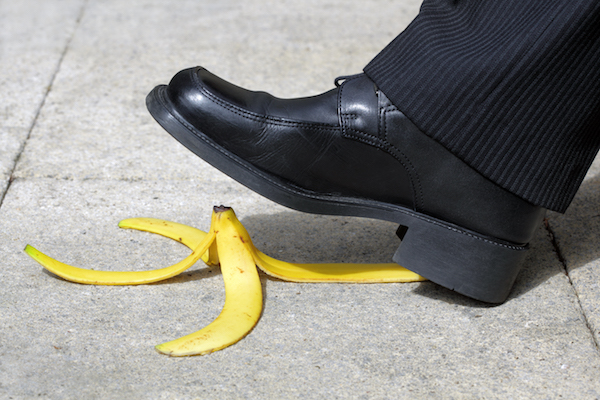Risk of Falls

According to the federal government, more than one third of adults 65 and older fall each year in the United States. Among older adults, falls are the leading cause of injury deaths. They are also the most common cause of nonfatal injuries and hospital admissions for trauma.
Statistics show that one in every three adults over the age of 65 years suffers a fall annually. In addition to the serious injuries and death that can occur, the medical expenses incurred as a result of the falls totals more than $20 billion. Falls are typically the result of physical changes that occur as individuals age.
The rates of fall-related deaths among older adults rose significantly over the past decade.
When people fall
20 to 30% of people suffer moderate to severe injuries; such as bruises, hip fractures, or head traumas. These injuries can make it hard to get around and limit independent living. They also can increase the risk of early death.
Most fractures among older adults are caused by falls.
The most common fractures are of the spine, hip, forearm, leg, ankle, pelvis, upper arm, and hand.
Many people who fall, even those who are not injured, develop a fear of falling. This fear may cause them to limit their activities, leading to reduced mobility and physical fitness, and increasing their actual risk of falling.
Who is at risk?
The risk of being seriously injured in a fall increases with age. The rates of fall injuries for adults 85 and older were four to five times that of adults 65 to 74. Women are 67% more likely than men to have a nonfatal fall injury. Rates of fall-related fractures among older adults are more than twice as high for women as for men.
How can older adults prevent falls?
To protect your loved ones’ independence and reduce your risk of falling:
Trip and Slip Dangers: Due to reduced mobility as you age the possibility to fall increases. Make certain your aging parents wear shoes with non-slip soles and make certain they fit well. Remove all throw rugs or other small obstacles could be hazardous and place electrical cords behind furniture and not in the walkway. Non-skid wax should be used on hardwood and linoleum floors. Spills should be cleaned up as soon as possible.
Physical Issues: Muscle weakness, pain in joints when walking, dizziness and other illnesses can lead to falls in the elderly. Health exams and using medications in proper dosages can prevent balance and joint pain problems. Before taking any over the counter medications, your loved one should check with their physician to see if there could be any negative interactions with their prescriptions. Another way to make certain your elderly parent or family member stays safe at home is by equipping their home with a medical alert system. These alerts and medical bracelets allow the elderly individual to press a button and summon help in the event of a fall or other medical emergency.
Light It Up: High watt bulbs should be used in light fixtures and night lights are a good idea to light up hallways or other dark areas. Also place power-interruption flashlights in strategic locations. With these in place, should the power go out, the flashlights will turn on.
Fix It Up: Thick carpets can cause trip and fall hazards so if you’re considering a remodeling project, remove carpets and install non-slip floors. There should be handrails on all stairs and grab bars in the bathtub and shower. Purchase a bathing stool and install a handheld shower nozzle. Every bathtub and shower should have a non-slip bath mat.
Safe At Home Living: If your elderly loved one uses a cane or walker, they can help reduce the risk of falling but it’s vital that there are no items such as furniture or carpeting that the walker or cane should get stuck on. Living safely at home means that your loved one should also try to remain physically active whether that means take an age-appropriate exercise class, a daily walk, or other exercises approved by their doctor.
If all of these steps are taken and your older loved one is equipped with a home medical alert system you will have greater peace of mind and the medical alert will allow them to age at home more independently.
- How Seniors Can Feel Empowered in a Digital World with Accessible Technology
- February Is American Heart Month
- Thriving as a New Caregiver: Self-Care Secrets Revealed
- Bridging the Gap: Supporting Seniors Without Nearby Family
- Distance Caregiving Simplified: Modern Strategies for Compassionate Support
FREE BROCHURE Today!
